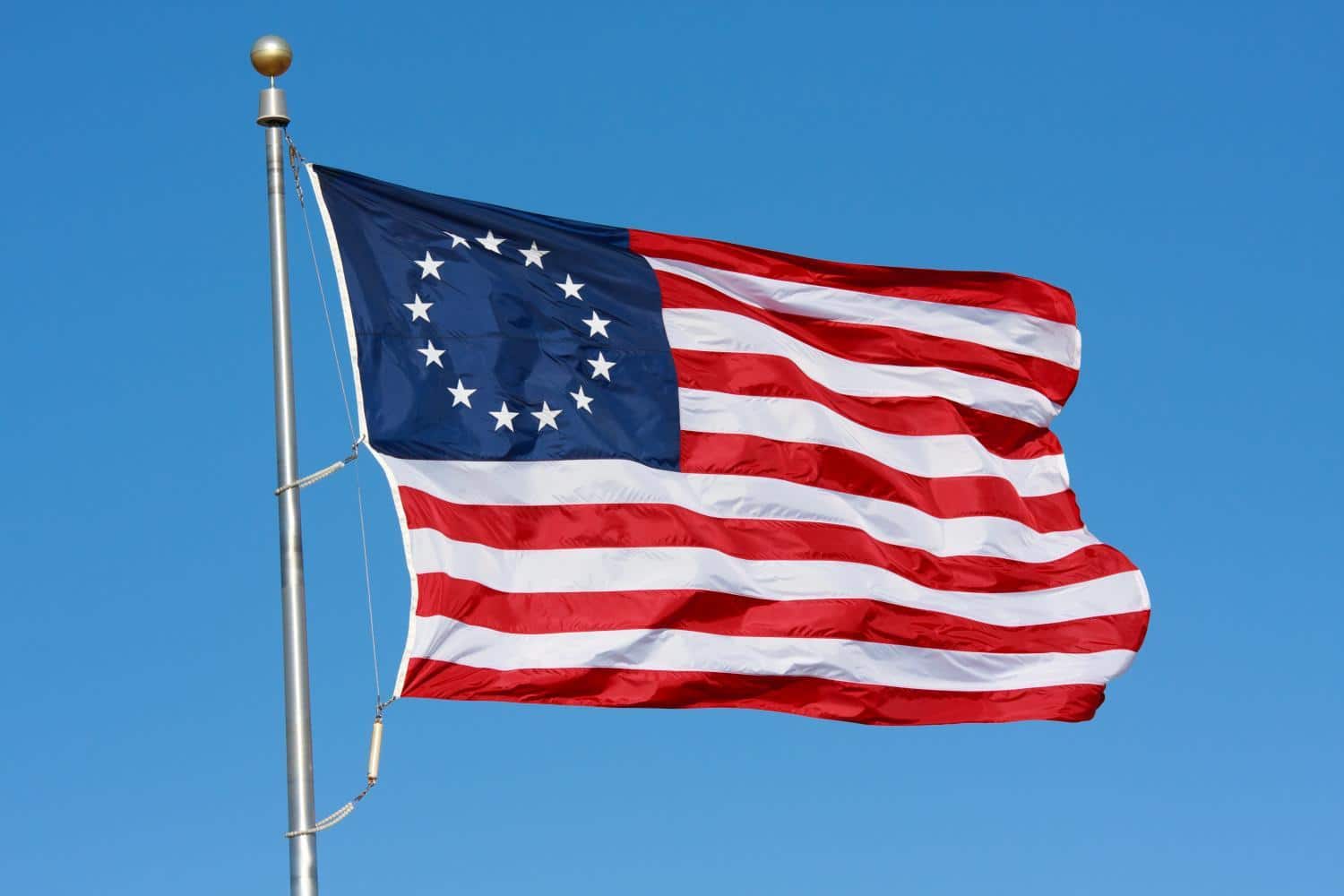As we approach next week’s celebration of Flag Day, my thoughts reflect on Betsy Ross, the iconic seamstress most of us learned about in elementary school.
There’s actually a slight dispute regarding whether Betsy made the first flag; however, several pieces of evidence indicate she more than likely is correctly credited. I recently learned this during a tour at the Betsy Ross House in Philadelphia, Pa.
Elizabeth “Betsy” Griscom Ross (1752-1836) was an upholsterer and seamstress in Philadelphia’s commercial district during the American Revolution. The surname Ross comes from her first husband, John Ross, who was killed on January 21, 1776, while serving in the Pennsylvania Militia. It is largely believed sometime that spring or early summer George Washington, Robert Morris, and George Ross, her late husband’s uncle, visited Betsy at her upholstery shop. The visit preceded the colonies’ July decision to declare independence. Legend tells us Washington gave her a sketch of a flag design that included six-pointed stars; however, Betsy knew she could more easily cut the cloth into a five-pointed star and persuaded the three men to allow the change. That story was told by Betsy to her children and grandchildren who signed affidavits in the 1800s stating the story as fact.
Betsy rented two rooms from a widow on Arch Street in Philadelphia. One of those rooms was downstairs and served as her upholstery shop. The second room was upstairs and served as her bed chambers. Betsy is believed to have sewn the flag in the privacy of her bedroom to keep it out of sight as making the flag would have been seen as an act of treason by the British. Fear of punishment is likely the reason there was no written documentation of Betsy’s 1776 commission to create the flag. However, it is documented that on May 29, 1777, Betsy was paid a large sum of money from the Pennsylvania State Navy Board for making flags. Two weeks later, on June 14, the Second Continental Congress adopted the Stars and Stripes as the official flag. That’s why we celebrate Flag Day each June 14.
Receipts prove Betsy and her first husband made bed hangings for George Washington’s home, Mount Vernon. Therefore, Washington would have been familiar with her quality of work. George Ross was on the Flag Committee. Another of Betsy’s in-laws, George Read, was a Delaware delegate who served with Robert Morris on the Marine Committee. It is feasible to believe George Ross and George Read would have known of Betsy’s allegiance to the revolution effort.
Betsy married twice after her first husband’s death. Her second husband, Joseph Ashburn, was killed in the war. Her third husband was John Claypoole, and they were married for 34 years. She had no children with her first husband, two daughters with Ashburn, and five daughters with Claypoole. She continued to sew throughout her career with her second and third husbands as well as with her daughters, granddaughters, and nieces. Evidence shows numerous contracts between Betsy and the U.S. government to make flags or other military supplies in the late 1700s and early 1800s.




